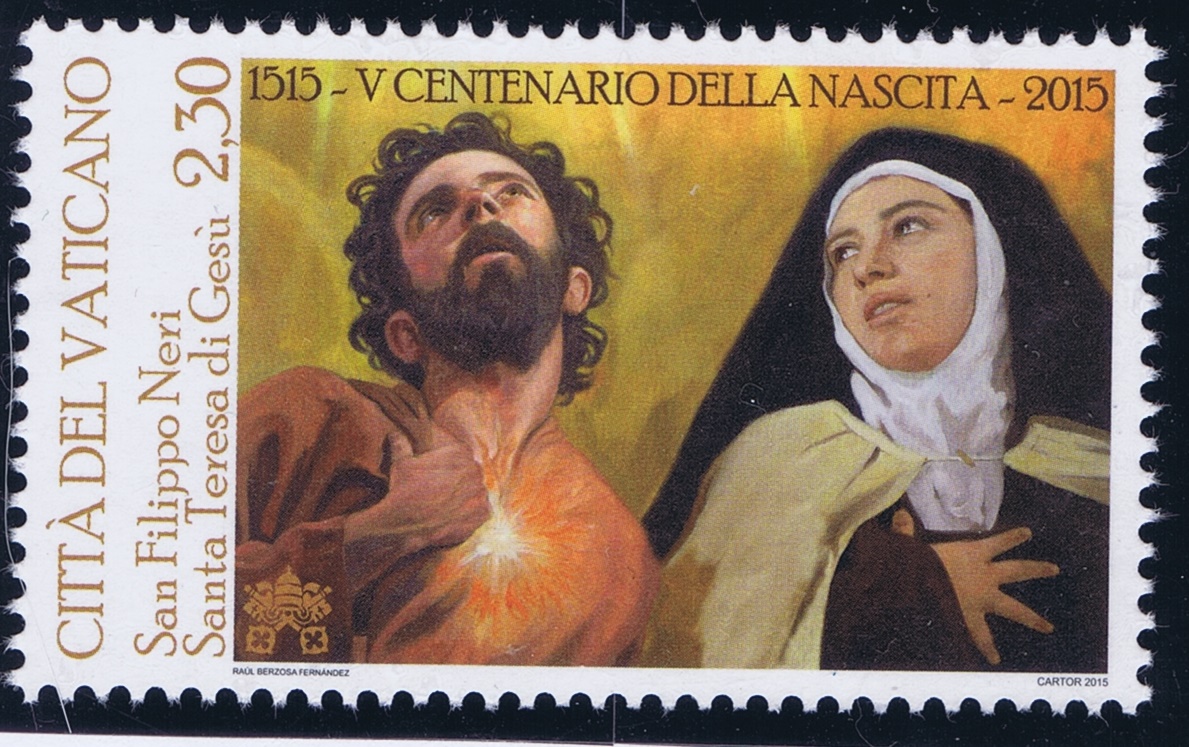
Home

500th Anniversary of the Births: Saint Phillip Neri and Saint Teresa of Jesus Scott 1605 (2015) October 15 marks the Feast of Saint Teresa of Ávila, also known as Saint Teresa of Jesus. Teresa was born on March 28, 1515, in the Spanish town of Avila, into an aristocratic family of Castile. At an early age she expressed a desire for martyrdom at the hands of Muslims as a means to realize the blessings of Heaven. At age 20, she then desired to join a Carmelite Order, and then experienced bouts of illness (perhaps malaria). She developed the practice of mental prayer, a life-long habit. She was influenced by the penitent examples of St. Mary Magdalene and St. Augustine. Historian David Farmer writes: “…her charm, affectionate exuberance, prudence, and charity were greatly appreciated, not the least by visitors to the convent,” (then governed by fairly relaxed rules).After 25 years as a Carmelite, she wanted to form a house where primitive Carmelite rules were observed. Although resisted by Carmelite authorities, she established the St. Joseph of Avila house in 1563, with 13 other nuns, living in conditions of poverty, hardship, and solitude, while living on manual work and alms. They observed a perpetual abstinence from meat, and wore coarse wool habits and sandals as their standard dress. Over her lifetime, 16 other houses were established, guided by her teachings and practice of prayer and contemplation. Farmer observes: “Teresa’s robust common sense, prudence, and trust in Providence allied with an extraordinary capacity for work and organization overcame all obstacles.”The Discalced Carmelites were granted recognition and independence from the Calced Carmelites. David Farmer notes: “The ideals and way of life established by her survive in the numerous small communities of Carmelite nuns who witness the importance of contemplation in the modern world, while her works are read by Christians of all denominations as well as by many who owe allegiance to none.”She composed an autobiography, as well as the books The Way of Perfection (the story of the Discalced Carmelite foundation), and The Interior Castle (about prayer and contemplation). Historian Dawn Beutner explains that Teresa experienced several spiritual gifts – she felt God had spoken to her directly to ‘converse with angels,’ she experienced a spiritual espousal and mystical marriage to Christ, and had a vision of her heart being pierced by an arrow. She died in 1582 while on her way back to Avila after establishing a foundation at Burgos. She was canonized in 1622, and declared a Doctor of the Church in 1970. She is buried at Alba de Tormes near Salamanca, Spain. The date of her death is given as either October 4 or October 15, 1582. In an interesting historical note, this was the exact point when Catholic Europe made the switch from the Julian calendar to the Gregorian calendar, which required the excision of the dates of October 5 to 14 from the calendar. She died either just prior to midnight on October 4, or in the early morning hours of the new October 15. In addition to the stamp above, issued to commemorate the 500th anniversary of her birth, Vatican City issued a three-stamp set in 1982 to remember the 400th anniversary of her death: 

 400th Anniversary of the Death of Saint Teresa of Avila Scott 710-712 (1982) St. Teresa’s symbol is a fiery arrow or a dove above her head. The 600 lira stamp above is a drawing based on the stunning sculpture by Gian Lorenzo Bernini, Saint Teresa in Ecstasy, located in the Cornaro Chapel of the church of Santa Maria della Vittoria in Rome:  Saint Teresa in Ecstasy, by Gian Lorenzo Bernini Photo by Livioandronico2013 From Wikimedia Commons, used under the terms of the Creative Commons Attribution-Share Alike 4.0 International license Watch for tomorrow's Daily Email, which will feature Gian Lorenzo Bernini. REFERENCES: |